Abstract
Scientific opportunities generally arise when two or more research areas converge and/or advances in methodology occur. This occurred at the turn of the 19th century in the field of infectious bacterial and fungal diseases. As we draw near to the 21st century, research in the laboratory is providing us with both critical information on mechanisms of carcinogenesis and new technological advancements, including those in immunology, biochemistry, and molecular biology. Investigations in the field of epidemiology have clearly demonstrated the importance of environmental exposure to carcinogens and have identified populations at high cancer risk. It is now practical to integrate laboratory determinations into classic epidemiological approaches. Several markers, e.g., carcinogen-DNA adducts, related to tumor initiation and perhaps to tumor conversion, are currently being evaluated. We also need to develop indicators of tumor promotion and progression. The potential of biochemical and molecular epidemiology to predict cancer risk in an individual prior to the onset of clinically evident cancer provides an exciting new opportunity in cancer research and prevention.
Full text
PDF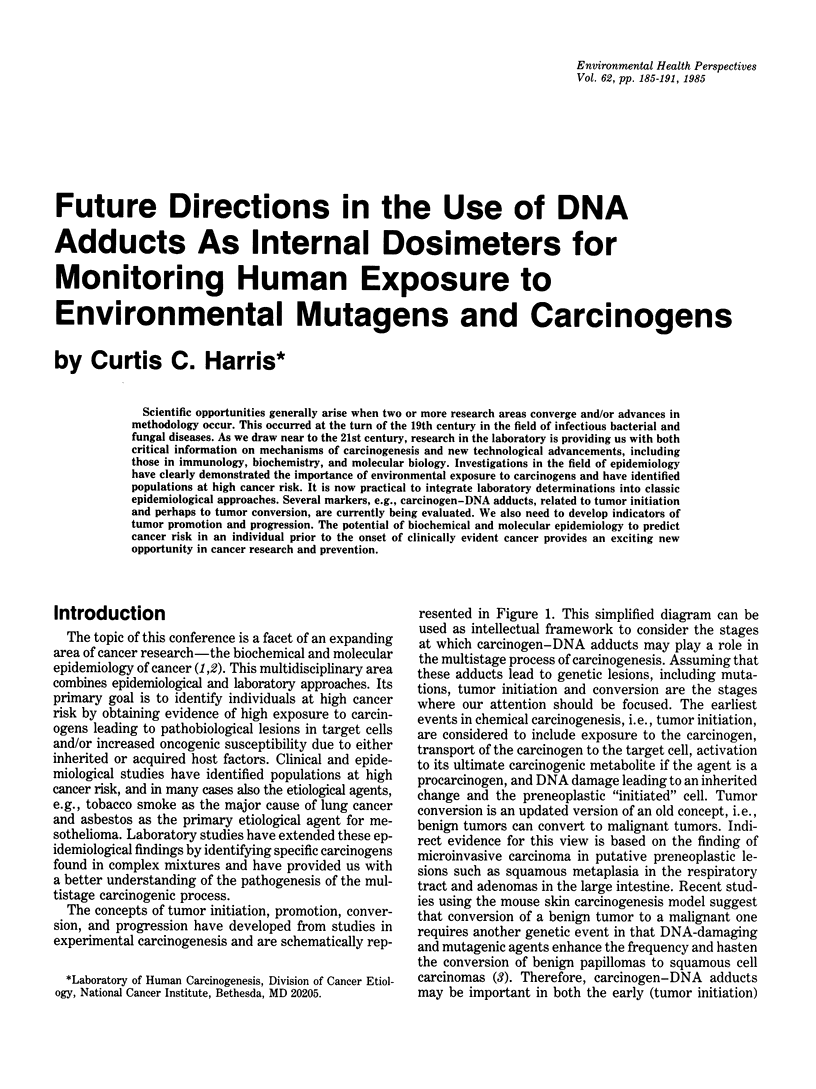
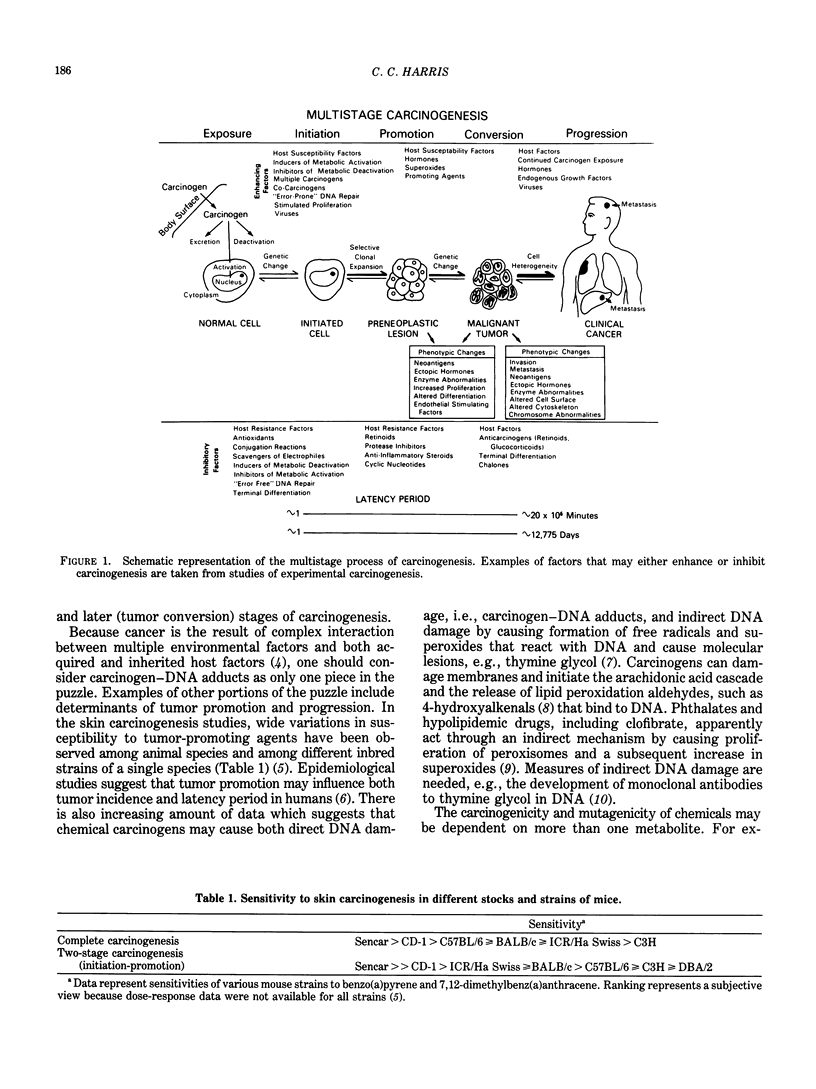
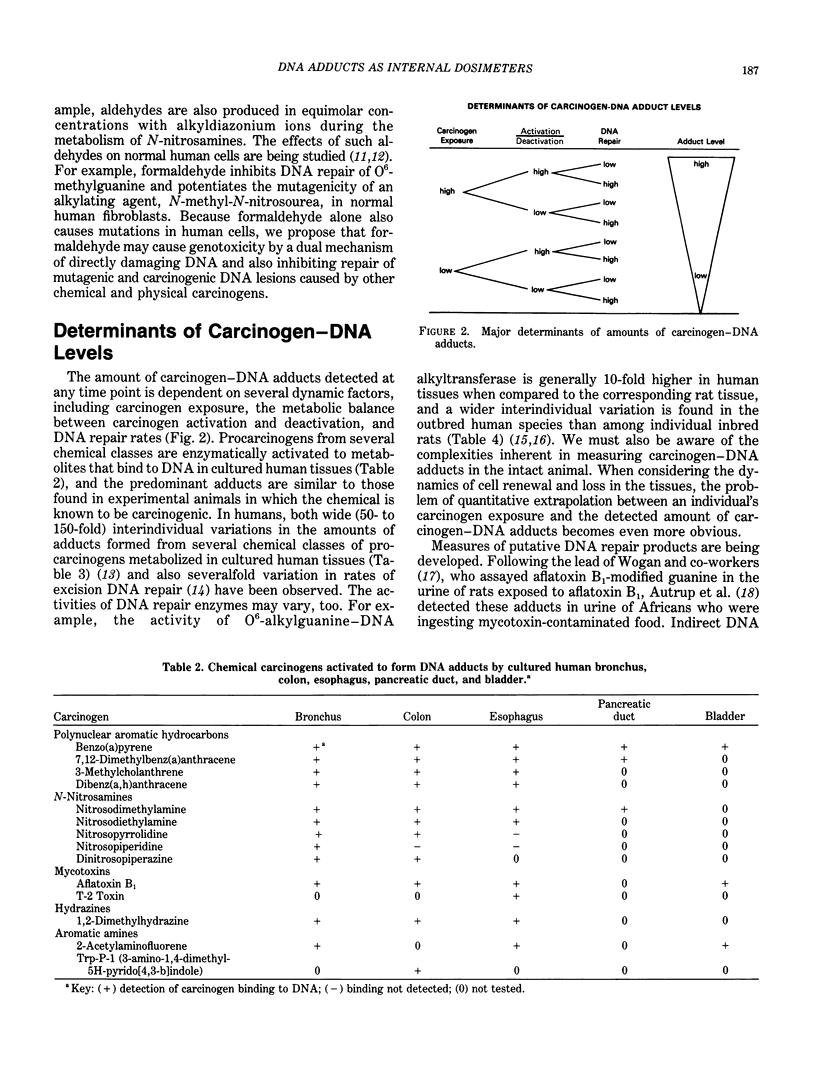
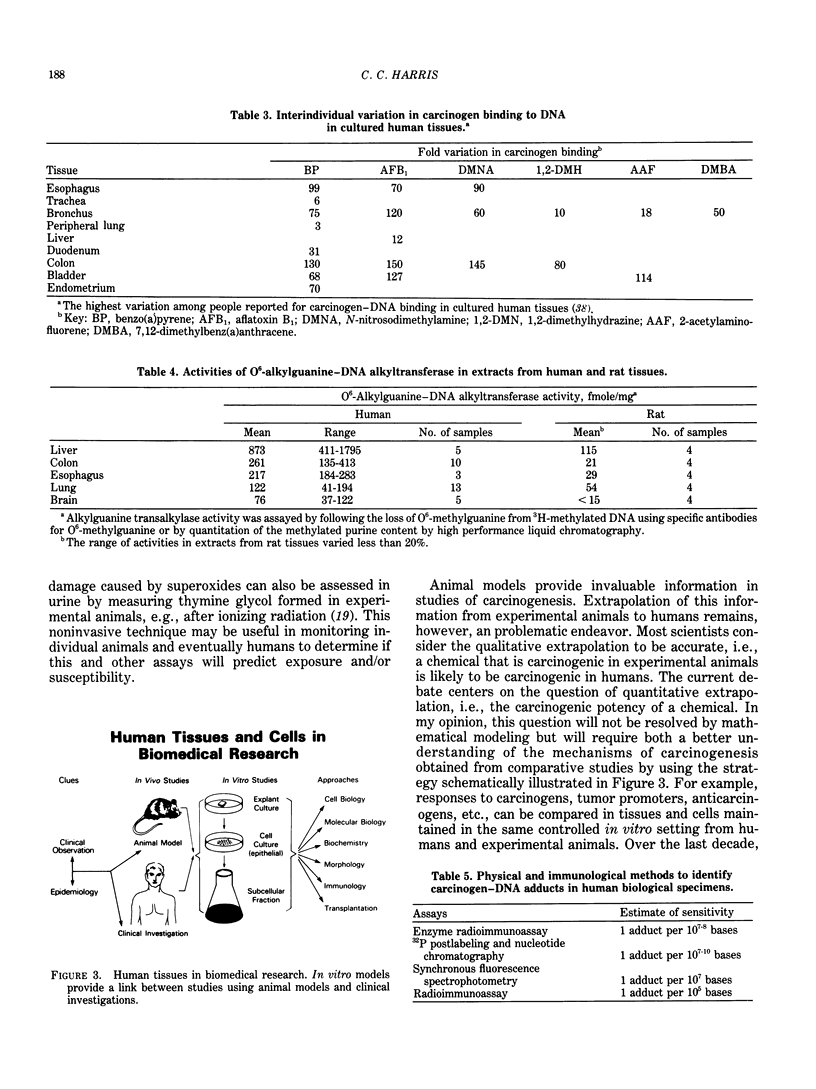
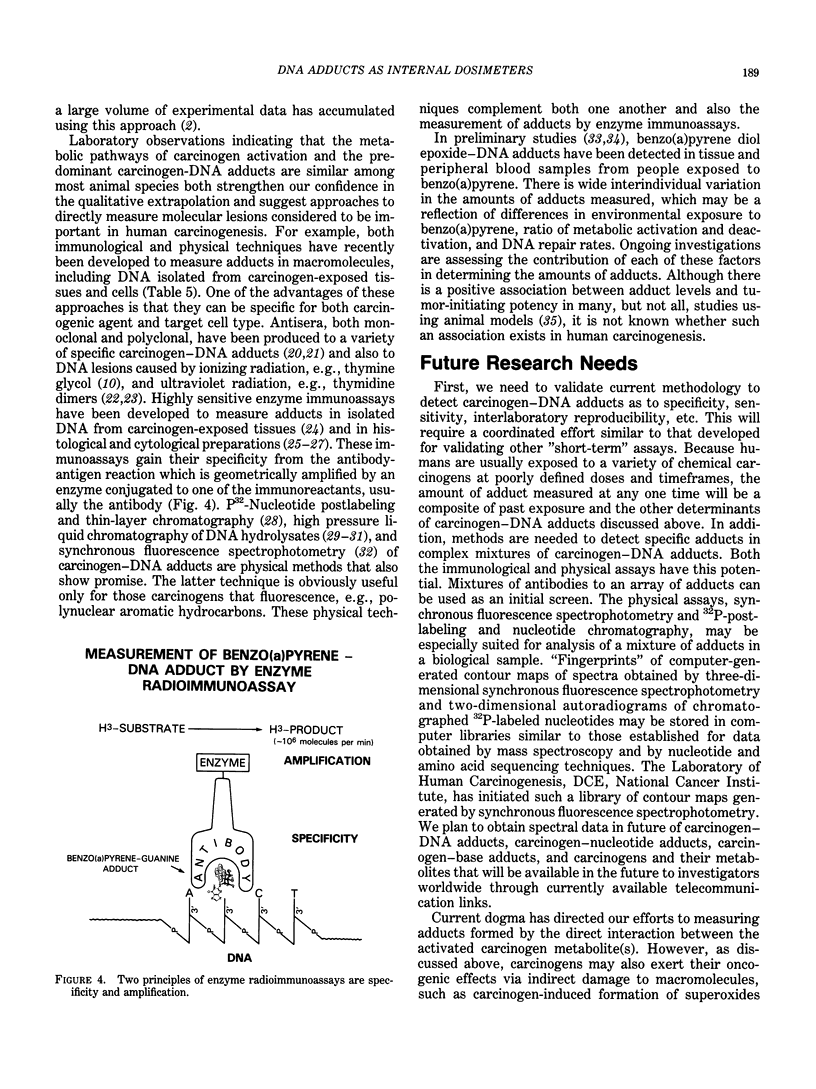
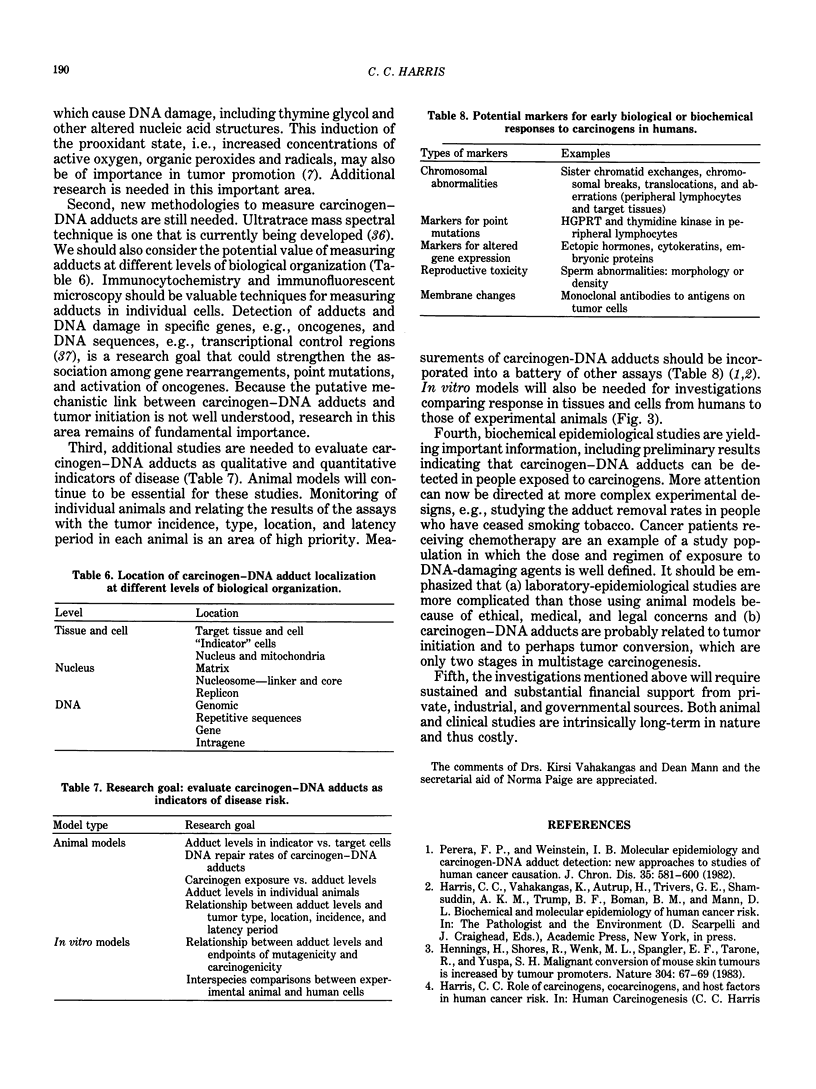
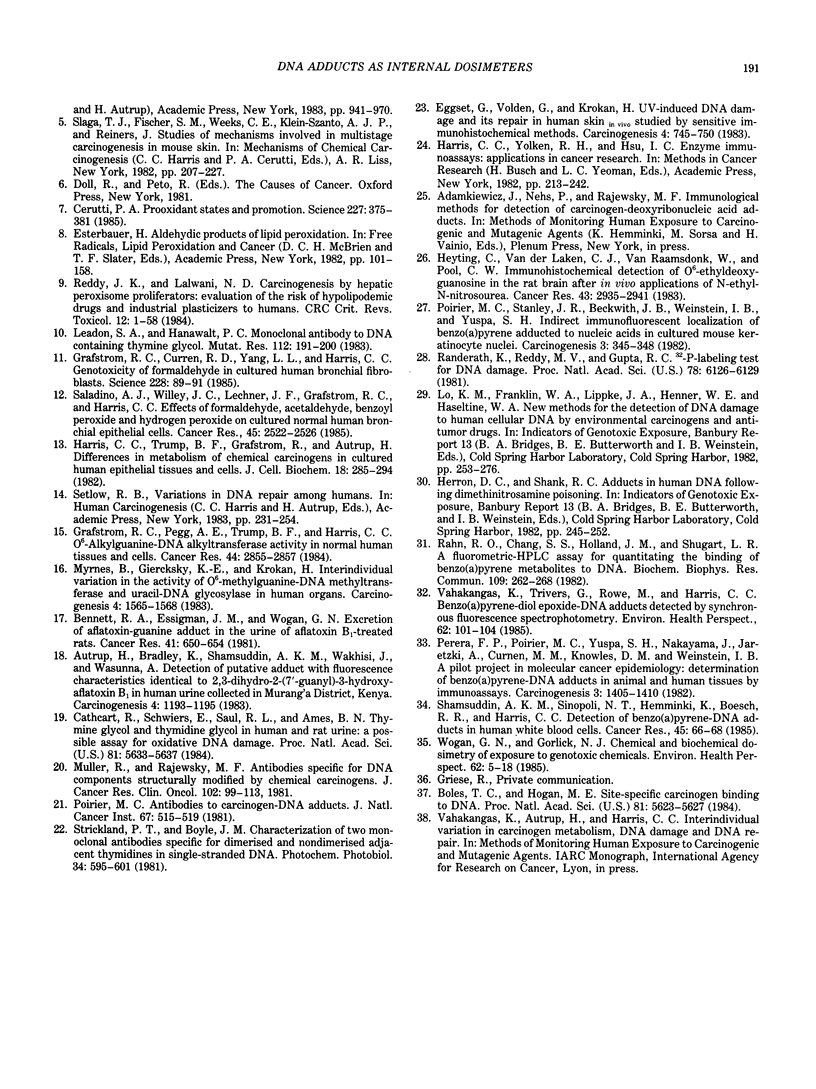
Selected References
These references are in PubMed. This may not be the complete list of references from this article.
- Autrup H., Bradley K. A., Shamsuddin A. K., Wakhisi J., Wasunna A. Detection of putative adduct with fluorescence characteristics identical to 2,3-dihydro-2-(7'-guanyl)-3-hydroxyaflatoxin B1 in human urine collected in Murang'a district, Kenya. Carcinogenesis. 1983 Sep;4(9):1193–1195. doi: 10.1093/carcin/4.9.1193. [DOI] [PubMed] [Google Scholar]
- Bennett R. A., Essigmann J. M., Wogan G. N. Excretion of an aflatoxin-guanine adduct in the urine of aflatoxin B1-treated rats. Cancer Res. 1981 Feb;41(2):650–654. [PubMed] [Google Scholar]
- Boles T. C., Hogan M. E. Site-specific carcinogen binding to DNA. Proc Natl Acad Sci U S A. 1984 Sep;81(18):5623–5627. doi: 10.1073/pnas.81.18.5623. [DOI] [PMC free article] [PubMed] [Google Scholar]
- Cathcart R., Schwiers E., Saul R. L., Ames B. N. Thymine glycol and thymidine glycol in human and rat urine: a possible assay for oxidative DNA damage. Proc Natl Acad Sci U S A. 1984 Sep;81(18):5633–5637. doi: 10.1073/pnas.81.18.5633. [DOI] [PMC free article] [PubMed] [Google Scholar]
- Cerutti P. A. Prooxidant states and tumor promotion. Science. 1985 Jan 25;227(4685):375–381. doi: 10.1126/science.2981433. [DOI] [PubMed] [Google Scholar]
- Eggset G., Volden G., Krokan H. U.v.-induced DNA damage and its repair in human skin in vivo studied by sensitive immunohistochemical methods. Carcinogenesis. 1983;4(6):745–750. doi: 10.1093/carcin/4.6.745. [DOI] [PubMed] [Google Scholar]
- Grafstrom R. C., Curren R. D., Yang L. L., Harris C. C. Genotoxicity of formaldehyde in cultured human bronchial fibroblasts. Science. 1985 Apr 5;228(4695):89–91. doi: 10.1126/science.3975633. [DOI] [PubMed] [Google Scholar]
- Grafstrom R. C., Pegg A. E., Trump B. F., Harris C. C. O6-alkylguanine-DNA alkyltransferase activity in normal human tissues and cells. Cancer Res. 1984 Jul;44(7):2855–2857. [PubMed] [Google Scholar]
- Harris C. C., Trump B. F., Grafstrom R., Autrup H. Differences in metabolism of chemical carcinogens in cultured human epithelial tissues and cells. J Cell Biochem. 1982;18(3):285–294. doi: 10.1002/jcb.1982.240180304. [DOI] [PubMed] [Google Scholar]
- Hennings H., Shores R., Wenk M. L., Spangler E. F., Tarone R., Yuspa S. H. Malignant conversion of mouse skin tumours is increased by tumour initiators and unaffected by tumour promoters. Nature. 1983 Jul 7;304(5921):67–69. doi: 10.1038/304067a0. [DOI] [PubMed] [Google Scholar]
- Heyting C., Van der Laken C. J., Raamsdonk W. V., Pool C. W. Immunohistochemical detection of O6-ethyldeoxyguanosine in the rat brain after in vivo applications of N-ethyl-N-nitrosourea. Cancer Res. 1983 Jun;43(6):2935–2941. [PubMed] [Google Scholar]
- Leadon S. A., Hanawalt P. C. Monoclonal antibody to DNA containing thymine glycol. Mutat Res. 1983 Aug;112(4):191–200. doi: 10.1016/0167-8817(83)90006-8. [DOI] [PubMed] [Google Scholar]
- Myrnes B., Giercksky K. E., Krokan H. Interindividual variation in the activity of O6-methyl guanine-DNA methyltransferase and uracil-DNA glycosylase in human organs. Carcinogenesis. 1983 Dec;4(12):1565–1568. doi: 10.1093/carcin/4.12.1565. [DOI] [PubMed] [Google Scholar]
- Müller R., Rajewsky M. F. Antibodies specific for DNA components structurally modified by chemical carcinogens. J Cancer Res Clin Oncol. 1981;102(2):99–113. doi: 10.1007/BF00410662. [DOI] [PubMed] [Google Scholar]
- Perera F. P., Poirier M. C., Yuspa S. H., Nakayama J., Jaretzki A., Curnen M. M., Knowles D. M., Weinstein I. B. A pilot project in molecular cancer epidemiology: determination of benzo[a]pyrene--DNA adducts in animal and human tissues by immunoassays. Carcinogenesis. 1982;3(12):1405–1410. doi: 10.1093/carcin/3.12.1405. [DOI] [PubMed] [Google Scholar]
- Perera F. P., Weinstein I. B. Molecular epidemiology and carcinogen-DNA adduct detection: new approaches to studies of human cancer causation. J Chronic Dis. 1982;35(7):581–600. doi: 10.1016/0021-9681(82)90078-9. [DOI] [PubMed] [Google Scholar]
- Poirier M. C. Antibodies to carcinogen-DNA adducts. J Natl Cancer Inst. 1981 Sep;67(3):515–519. [PubMed] [Google Scholar]
- Poirier M. C., Stanley J. R., Beckwith J. B., Weinstein I. B., Yuspa S. H. Indirect immunofluorescent localization of benzo[a]pyrene adducted to nucleic acids in cultured mouse keratinocyte nuclei. Carcinogenesis. 1982;3(3):345–348. doi: 10.1093/carcin/3.3.345. [DOI] [PubMed] [Google Scholar]
- Rahn R. O., Chang S. S., Holland J. M., Shugart L. R. A fluorometric-HPLC assay for quantitating the binding of benzo[a]pyrene metabolites to DNA. Biochem Biophys Res Commun. 1982 Nov 16;109(1):262–268. doi: 10.1016/0006-291x(82)91594-7. [DOI] [PubMed] [Google Scholar]
- Randerath K., Reddy M. V., Gupta R. C. 32P-labeling test for DNA damage. Proc Natl Acad Sci U S A. 1981 Oct;78(10):6126–6129. doi: 10.1073/pnas.78.10.6126. [DOI] [PMC free article] [PubMed] [Google Scholar]
- Reddy J. K., Lalwai N. D. Carcinogenesis by hepatic peroxisome proliferators: evaluation of the risk of hypolipidemic drugs and industrial plasticizers to humans. Crit Rev Toxicol. 1983;12(1):1–58. doi: 10.3109/10408448309029317. [DOI] [PubMed] [Google Scholar]
- Saladino A. J., Willey J. C., Lechner J. F., Grafstrom R. C., LaVeck M., Harris C. C. Effects of formaldehyde, acetaldehyde, benzoyl peroxide, and hydrogen peroxide on cultured normal human bronchial epithelial cells. Cancer Res. 1985 Jun;45(6):2522–2526. [PubMed] [Google Scholar]
- Shamsuddin A. K., Sinopoli N. T., Hemminki K., Boesch R. R., Harris C. C. Detection of benzo(a)pyrene:DNA adducts in human white blood cells. Cancer Res. 1985 Jan;45(1):66–68. [PubMed] [Google Scholar]
- Strickland P. T., Boyle J. M. Characterisation of two monoclonal antibodies specific for dimerised and non-dimerised adjacent thymidines in single stranded DNA. Photochem Photobiol. 1981 Nov;34(5):595–601. [PubMed] [Google Scholar]
- Vahakangas K., Trivers G., Rowe M., Harris C. C. Benzo(a)pyrene diolepoxide-DNA adducts detected by synchronous fluorescence spectrophotometry. Environ Health Perspect. 1985 Oct;62:101–104. doi: 10.1289/ehp.8562101. [DOI] [PMC free article] [PubMed] [Google Scholar]
- Wogan G. N., Gorelick N. J. Chemical and biochemical dosimetry of exposure to genotoxic chemicals. Environ Health Perspect. 1985 Oct;62:5–18. doi: 10.1289/ehp.85625. [DOI] [PMC free article] [PubMed] [Google Scholar]


